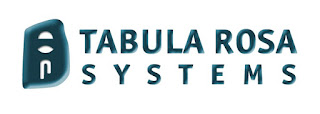Graph Analytics
|
| Graph
analytics is a category of tools used to apply algorithms that
will help a data analyst understand the relationship between graph database
entries. The structure of a graph is made up of nodes (also known as vertices) and edges. Nodes denote points in the graph data. For example, accounts, customers, devices, groups of people, organizations, products or locations may all be represented as a node. Edges symbolize the relationships, or lines of communication, between nodes. Every edge can have a direction, either one-way or bidirectional, and a weight, to depict the strength of the relationship. Once the graph database is constructed, analytics can be applied. The algorithms can be used to identify values or uncover insights within the data such as the average path length between nodes, nodes that might be outliers and nodes with dominant activity. It can also be used to arrange the data in new ways such as partitioning information into sections for individual analysis or searching for nodes that meet specific criteria. Some common tools used to create graph analytics include Apache Spark GraphX, IBM Graph, Gradoop, Google Charts, Cytoscape and Gephi. Types of graph analytics There are four main types of analytics that can be applied to graphs:
Graph analytics can be used for a variety of applications, such as:
|
Let's remove this guy once and for all!
++++++++++++++++++++++++++++++++++++++++++++++++++++++++
Good Netiquette And A Green Internet To All!
=====================================================================Tabula
Rosa Systems - Tabula Rosa Systems (TRS) is dedicated to providing Best
of Breed Technology and Best of Class Professional Services to our
Clients. We have a portfolio of products which we have selected for
their capabilities, viability and value. TRS provides product, design,
implementation and support services on all products that we represent.
Additionally, TRS provides expertise in Network Analysis, eBusiness
Application Profiling, ePolicy and eBusiness Troubleshooting.
We can be contacted at:
sales@tabularosa.net
or 609 818 1802.

www.amazon.com/author/paulbabicki
====================================================

Catfishing
From Wikipedia,
the free encyclopedia
Catfishing is a type of deceptive activity where a person creates a
sock puppet
social networking
presence, or fake identity on a social network account,
usually targeting a specific victim for deception.
Catfishing is
often employed for romance scams on
dating websites. Catfishing may be used for financial gain, to compromise a
victim in some way, or simply as a form of trolling or wish fulfillment.
Catfishing
media has been produced, often centering around victims who wish to identify
their catfisher
|
We can be contacted at:
===============================================================In addition to this blog, Netiquette IQ has a website with great assets which are being added to on a regular basis. I have authored the premiere book on Netiquette, “Netiquette IQ - A Comprehensive Guide to Improve, Enhance and Add Power to Your Email". My new book, “You’re Hired! Super Charge Your Email Skills in 60 Minutes. . . And Get That Job!” has just been published and will be followed by a trilogy of books on Netiquette for young people. You can view my profile, reviews of the book and content excerpts at:
www.amazon.com/author/paulbabicki
Anyone who would like to review the book and have it posted on my blog or website, please contact me paul@netiquetteiq.com.
In addition to this blog, I maintain a radio show on BlogtalkRadio and an online newsletter via paper.li.I have established Netiquette discussion groups with Linkedin and Yahoo. I am also a member of the International Business Etiquette and Protocol Group and Minding Manners among others. I regularly consult for the Gerson Lehrman Group, a worldwide network of subject matter experts and I have been contributing to the blogs Everything Email and emailmonday . My work has appeared in numerous publications and I have presented to groups such as The Breakfast Club of NJ and PSG of Mercer County, NJ.
Additionally, I am the president of Tabula Rosa Systems,
a “best of breed” reseller of products for communications, email,
network management software, security products and professional
services. Also, I am the president of Netiquette IQ. We are currently developing an email IQ rating system, Netiquette IQ, which promotes the fundamentals outlined in my book.








No comments:
Post a Comment